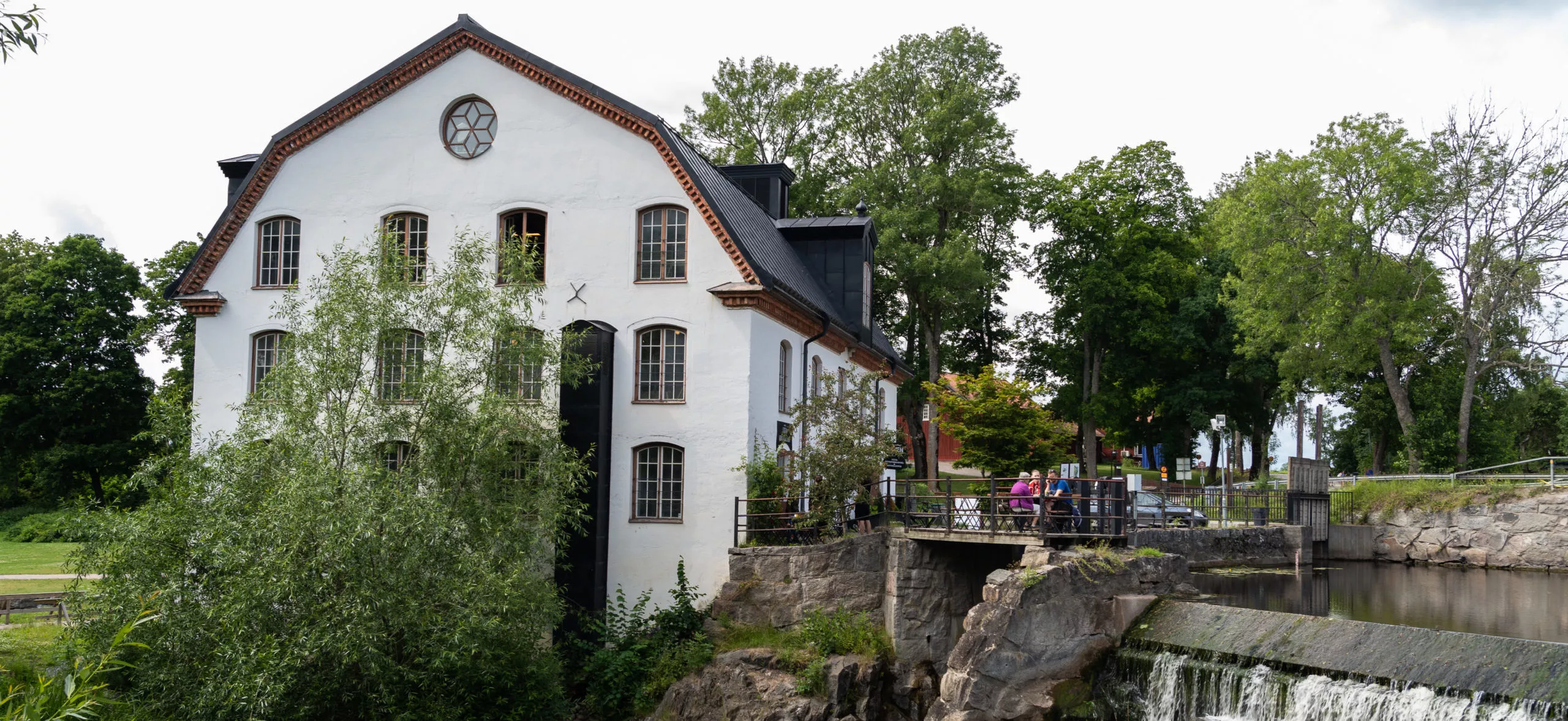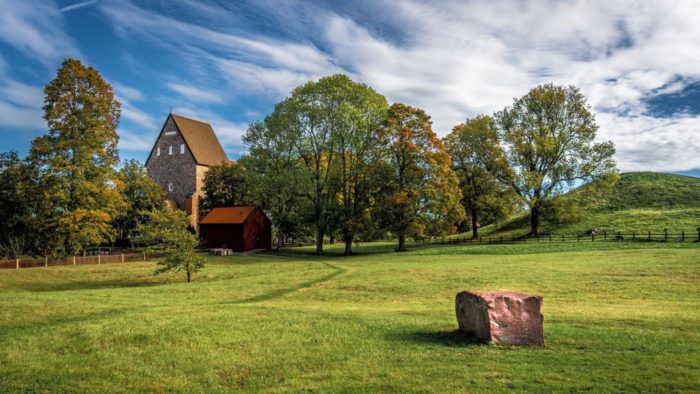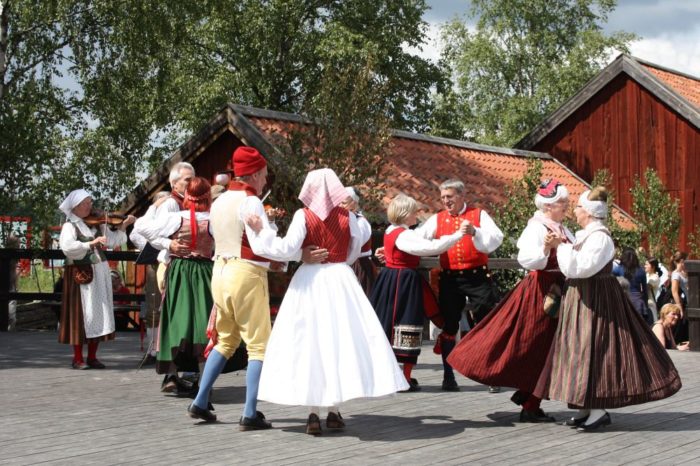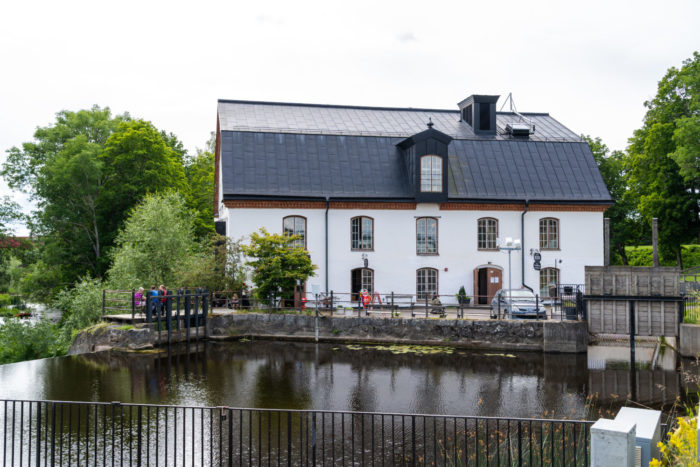
At the open-air museum Disagården in Gamla Uppsala, you get an insight into how people lived in the Uppland countryside during the 19th century. On the other side of the farm and the church are the three Kungshögar (Royal Mounds), where the Swedes gathered to worship their gods. Our guide will tell you all about this and much more during the journey. In a beautiful environment, surrounded by greenery, lies Ulva Kvarn, a real hidden gem with a craft village, shops, and a café.
At Ulva Kvarn, the Fyris River cascades down a small waterfall, and below it rushes rapidly over the stones. The mill site at Ulva was mentioned as early as the 1300s. The place was a ford for people and cattle, where, among other things, the wolf could cross the water. The current mill house was built in the late 1750s and operated as a mill until 1963. In 1998, the building burned down and was subsequently restored and renovated to be reopened in 1999. Since the 1980s, Ulva Kvarn has been a craft village with glassblowers, artists, watchmakers, antique dealers, silversmiths, as well as a café and restaurant.
The buildings are relocated from various parts of Uppland, and the open-air museum aims to depict an Uppland village environment as it may have appeared in the mid-19th century, before land consolidation (which often divided villages and moved farms). Through the village winds the village street, and along it lie three farms. On the outskirts of the village lies a soldier’s cottage. One of the farms, the largest, is a typical Uppland plains farm. The houses are closely built together so that residential houses, sheds, barns, and cowsheds together form a closed courtyard, divided in half by a stable aisle.
We have lunch in the beautiful surroundings of Gamla Uppsala.
Our bus guide will tell you about Gamla Uppsala and the legendary royal mounds; here, there was a Royal Manor, and the Swedes gathered to worship their gods. Gamla Uppsala’s history is exciting, and there is much evidence to suggest that Sweden’s first Cathedral was built here in the 11th century. We continue towards the city, previously known as Östra Aros, which would later become modern Uppsala.
Price: ……..
Included in the example above: Morning coffee and sandwich, full-day bus guiding, and lunch.
Duration: …..
Optional: The bus is not included; we are happy to help you book it.



